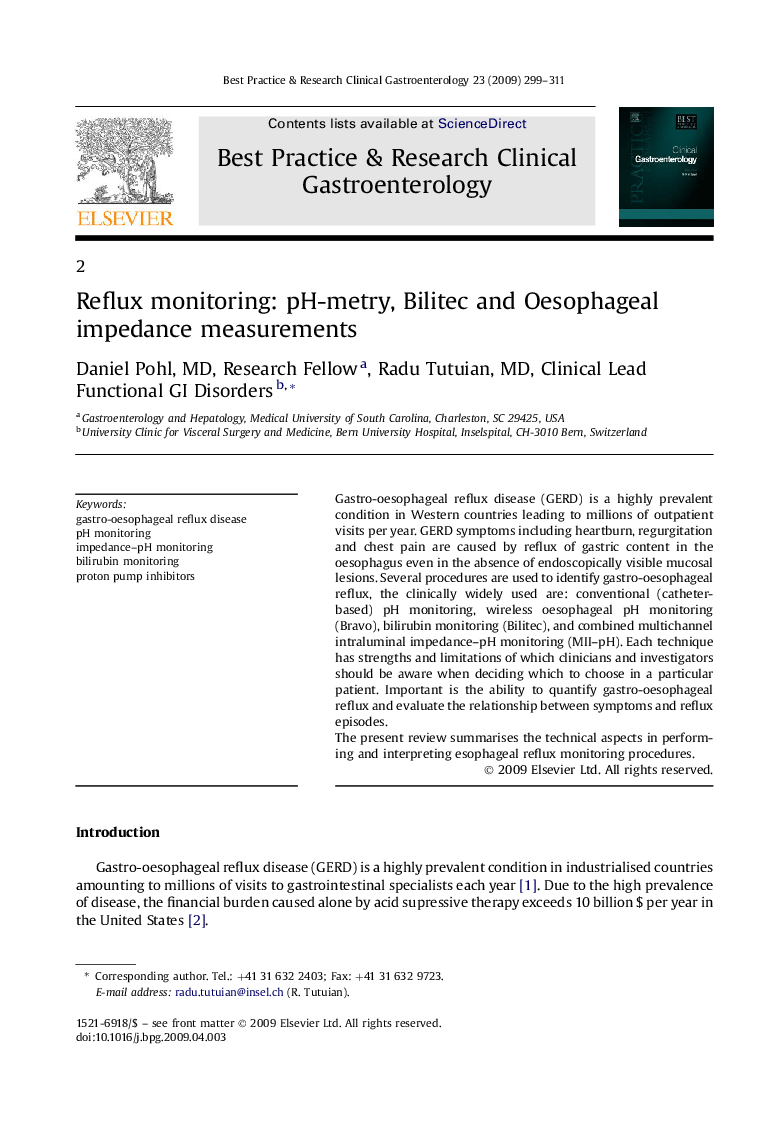| Article ID | Journal | Published Year | Pages | File Type |
|---|---|---|---|---|
| 3254758 | Best Practice & Research Clinical Gastroenterology | 2009 | 13 Pages |
Gastro-oesophageal reflux disease (GERD) is a highly prevalent condition in Western countries leading to millions of outpatient visits per year. GERD symptoms including heartburn, regurgitation and chest pain are caused by reflux of gastric content in the oesophagus even in the absence of endoscopically visible mucosal lesions. Several procedures are used to identify gastro-oesophageal reflux, the clinically widely used are: conventional (catheter-based) pH monitoring, wireless oesophageal pH monitoring (Bravo), bilirubin monitoring (Bilitec), and combined multichannel intraluminal impedance–pH monitoring (MII–pH). Each technique has strengths and limitations of which clinicians and investigators should be aware when deciding which to choose in a particular patient. Important is the ability to quantify gastro-oesophageal reflux and evaluate the relationship between symptoms and reflux episodes.The present review summarises the technical aspects in performing and interpreting esophageal reflux monitoring procedures.
